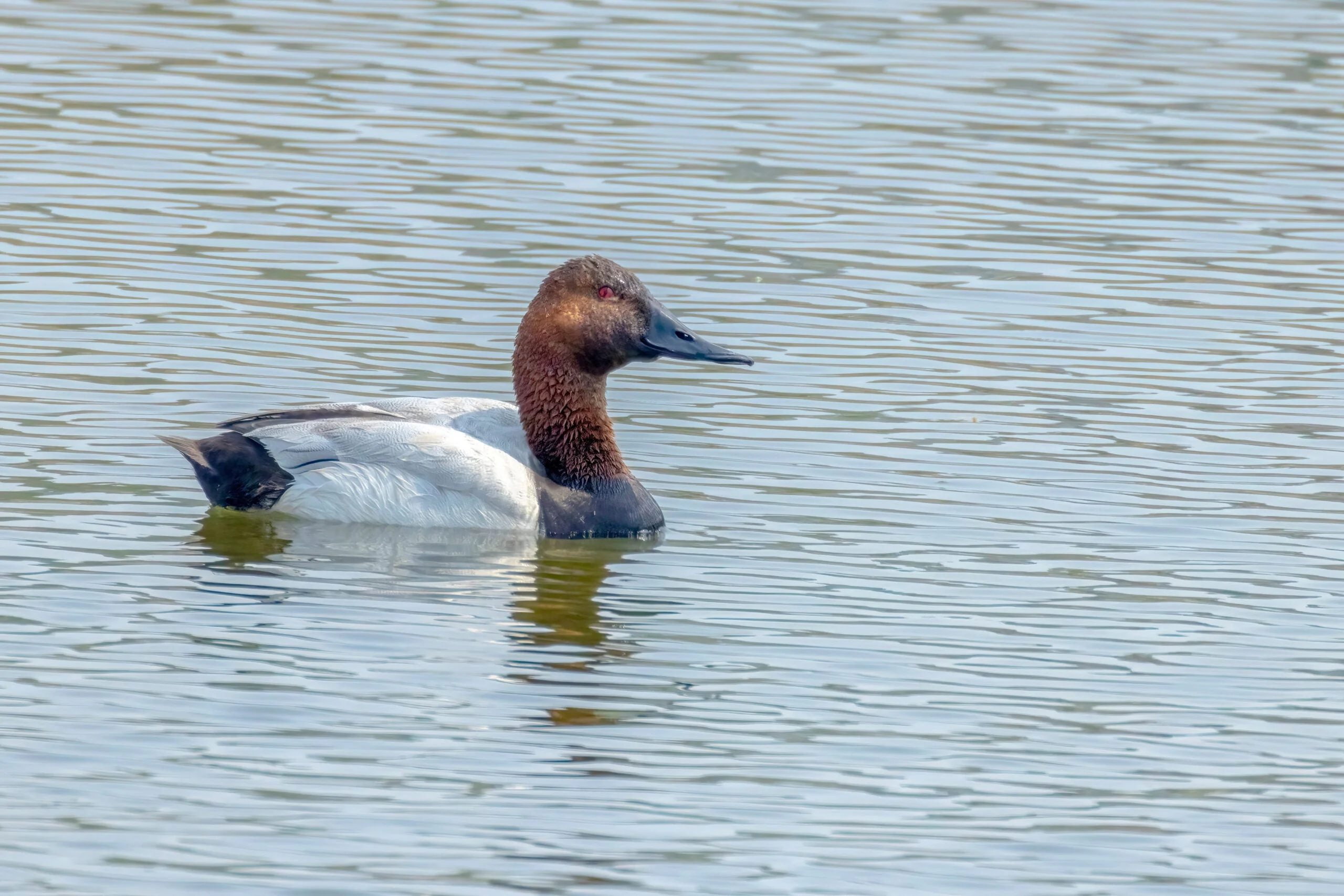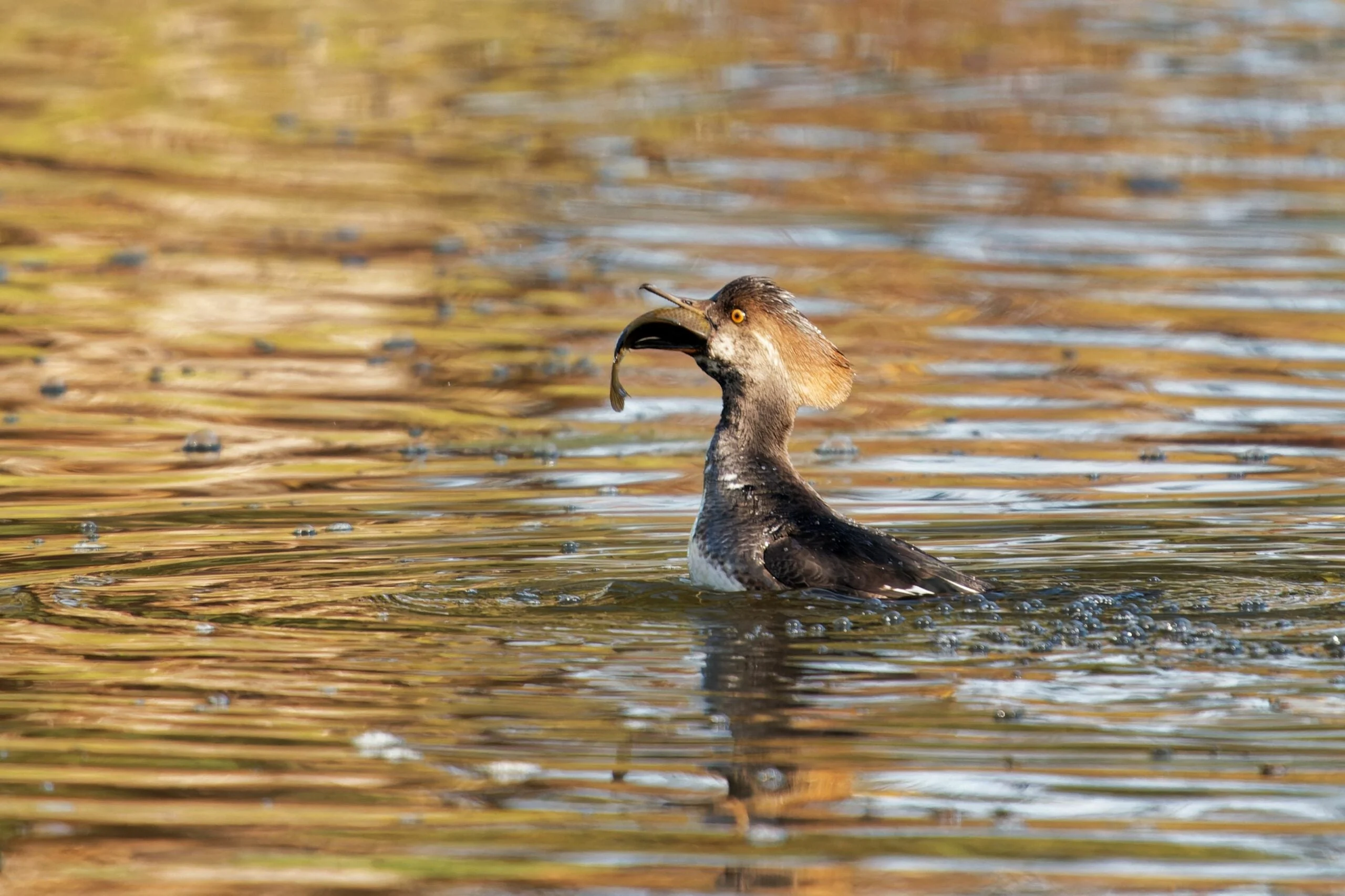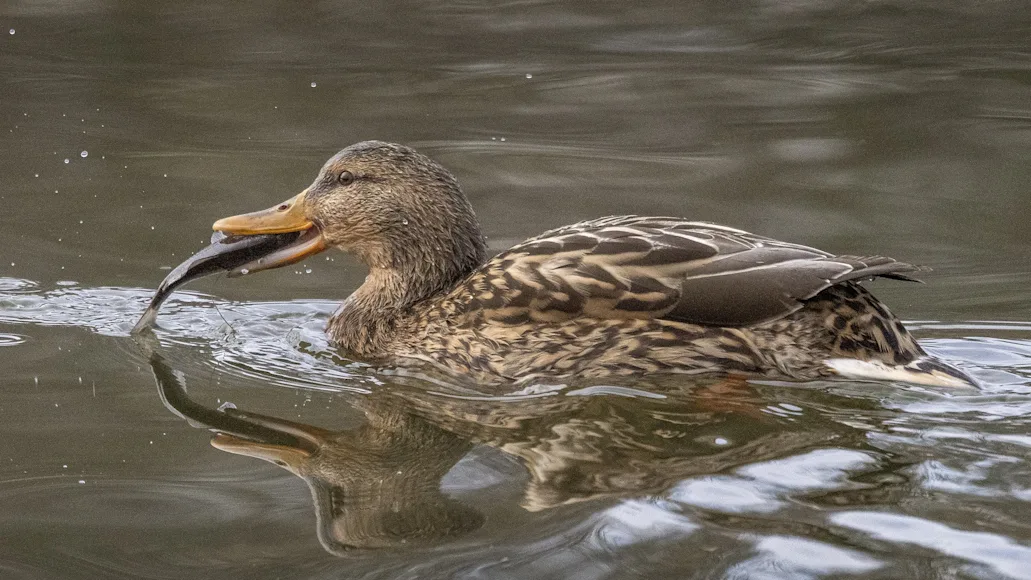It not stale popcorn and Wonder Bread, although the Muscovy ducks and Khaki Campbells at the local community center pond would be more than happy if you showed up with either or both. So, what do ducks eat?
Answering that question can prove somewhat of a challenge. There’s a wide variety of duck food out there, as the majority of wild waterfowl
will make a meal of 1,001 different things, depending on where they are, the time of year, and what’s available. However, by breaking ducks down into groups and then understanding how the members of each group feed, the clouds part and the mystery of what ducks eat begins to unravel.
Two Main Types of Ducks

Canvasbacks love wild celery (Vallisneria americana) so much so that a portion of their Latin name—Aythya valisineria—is derived from their go-to food source. Adobe Stock / oasisamuel
Yes, there are tree ducks like black-bellied whistling ducks, and sea ducks like surf scoters. However, 99 percent of North American waterfowl
will fall into one of two categories, either dabbling ducks or diving ducks.
Dabbling Ducks
Also known as puddle ducks due to their preference for shallow water “puddles,” this group includes mallards, pintails, widgeon, teal, northern shovelers, and gadwall. Dabbling ducks feed by tipping up; that is, by pointing their tails to the sky, putting their head underwater, and searching about or “grubbing” with their bill for things to eat. With their legs positioned roughly at the mid-point between their tail and chest, dabblers are well-designed for this so-called tipping up, as well as walking about on land in search of food.
Diving Ducks
As the name implies, diving ducks such as greater and lesser scaup, canvasbacks, and redheads dive for their meals. They’re equipped for the task however, thanks to several physical differences from dabblers including an more streamlined physique, compact backswept wings that minimize drag, legs located closer to their tails, and lobed paddle-like feet. Although diving ducks, or “divers,” will spend time on shallow ponds, frequent haunts for these rugged fowl include big-water lakes and rivers with typical feeding depths of 10-50 feet. Once at an underwater food source, divers will hunt about until finding a suspect, snatch it up in their strong bill, and rise to the surface, where it’s swallowed whole to be crushed by the bird’s powerful gizzard.
What Do Ducks Eat?
With this background now, understanding what’s on the menu for dabblers and divers becomes a little easier. Dabblers eat primarily vegetative material and, when available and accessible, grains. However, none will hesitate to supplement their plant diet with terrestrial insects and aquatic invertebrates. The menu might look something like this:
Duck weed
Algae
Smart weed
Wild celery/eelgrass
Wild rice
Coontail
Grasses
Earthworms/nightcrawlers
Insect larvae, such as hellgrammites
Flying bugs
Spiders
Snails
Acorns (wood ducks)
Agricultural crops, such as corn, barley, peas, and millet
Divers won’t forgo a buffet of submerged vegetation, but the group is primarily known for their fondness of non-vegetative foods, such as:
Clams
Mussels
Small fish or minnows
Aquatic insects
Freshwater shrimp
Crayfish
What Do Ducks Eat: Notes and Exceptions

While hooded mergansers will eat more plant material than non-plant foods, rarely will they shy away from fish. Adobe Stock / Debi Murk / Wirestock Creators
In Mother Nature, there are very few hard-and-fast rules. Such is the case in a discussion focusing on what ducks eat. It’s easy to generalize and say dabblers eat vegetation and divers prefer something other than plants, but it’s important not to forget these notes and exceptions.
Common and red-breasted mergansers, also known as fish ducks, do indeed eat a wide variety of fish, including salmon smolts, trout, minnows, shad, and game fish. However, a relative, the handsome hooded merganser, actually eats more plant material than it does non-plant foods.
Don’t think for a minute that mallards won’t eat fish. Late in the season when winter-killed gizzard shad appear in Midwestern lakes and rivers, mallard ducks will often gorge themselves on this short-lived, albeit abundant food source, putting them in a neck-to-neck race with mergansers in terms of on-the-table taste. UGH!
Like scaup swallowing zebra mussels whole, letting their gizzards perform the task of “chewing” their food for them, wood ducks commonly eat oak acorns whole, their necks then round and bulging, feeling very much like a sack filled with marbles. Years ago, I cleaned a beautiful drake woodie, only to find that the needle-sharp point of a fully intact hickory nut had punctured the bird’s gizzard and was protruding into its body cavity.
The king of all ducks, the canvasback, is technically a diver, but it prefers to spend its time on shallower, though expansive waters like the Mississippi’s Pool 9, with his favorite menu item being wild celery. Canvasbacks love wild celery (Vallisneria americana) so much so that a portion of their Latin name—Aythya valisineria—is derived from their go-to food source.
How do you make a widgeon happy? Give the little grazer 50 acres of short, green grass pasture with an inch or less of water overtop. Sprinkle 500 baldpate on the same soggy field, and they’ll give any three-deck John Deere mower a run for its money.






